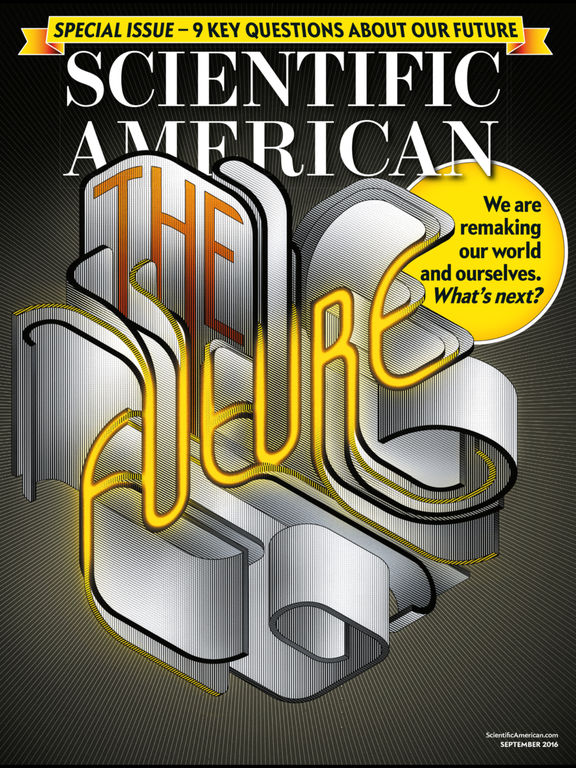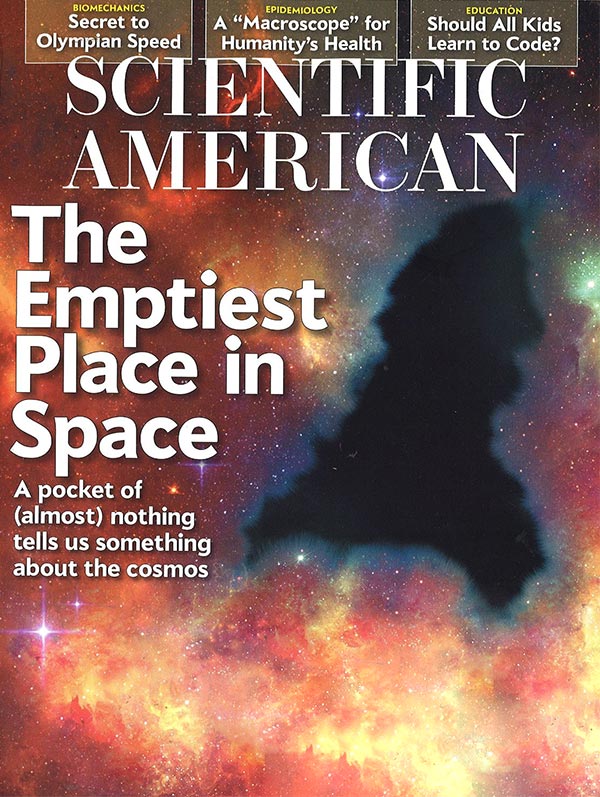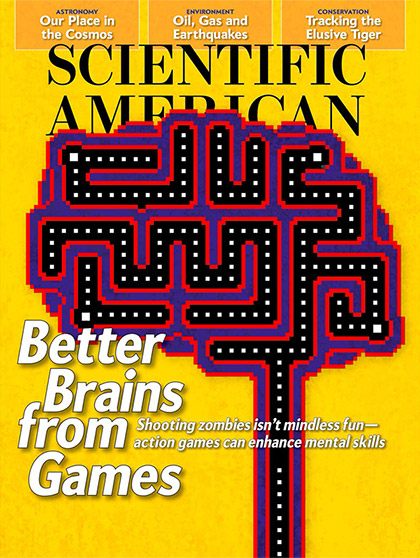The doomsayers’ answer to failed predictions
This article was originally published in Free Inquiry magazine Vol. 36, No. 6. in September 2016.
If I had to summarize Phil Torres’ thoughtful analysis of the existential threat of terrorism (“There’s No Time to Wait”) in a phrase it would be “just you wait!” So 68 national security experts of the 85 surveyed in 2005 gave the bookmaker’s odds of a terrorist nuclear detonation on American soil by 2015 at an average of 29.2% (and a range of 10 to 50%), but since it didn’t happen what do such failed predictions mean? The odds makers are wrong? Fissile material is hard to procure? Nuclear weapons are difficult to build? Our national security agencies are doing their job? Terrorists are too incompetent to pull it off? No, says Torres, the only reason we escaped the projected decade unscathed by nuclear fallout is…luck! Plain old dumb luck, the same reason we narrowly escaped thermonuclear doomsday for the 45 years of the Cold War.
The “luck” explanation implies that it is only a matter of time before the die come up snake eyes (or double sixes if you prefer) and mushroom clouds are rising above our cities. This is a “just you wait” explanation that doomsayers decry when their predictions fail. It’s a timeframe problem—move the time horizon out far enough and the laws of probability must strike against us. But this assumes that human behavior is subject to the same laws as those governing the roll of die, which it isn’t. It also discounts the game theory strategic efforts during the Cold War such as Mutual Assured Destruction, negotiation, and tit-for-tat reciprocity, all of which were in play during the Cuban Missile Crisis that really did forestall nuclear Armageddon. But luck had little to do with it. Kennedy and Khrushchev and their respective cabinets reasoned their way to a solution to untie the knotted rope each side had helped to tighten. And it sells short the heroic efforts of our intelligence agents who have, to date, prevented the terrorist apocalyptic nuclear scenarios in the offing. (continue reading…)
Comments Off on Just You Wait!
Is it possible to measure supernatural or paranormal phenomena?
The history of science has beheld the steady replacement of the paranormal and the supernatural with the normal and the natural. Weather events once attributed to the supernatural scheming of deities are now understood to be the product of natural forces of temperature and pressure. Plagues formerly ascribed to women cavorting with the devil are currently known to be caused by bacteria and viruses. Mental illnesses previously imputed to demonic possession are today sought in genes and neurochemistry. Accidents heretofore explained by fate, karma or providence are nowadays accredited to probabilities, statistics and risk.
If we follow this trend to encompass all phenomena, what place is there for such paranormal forces as ESP or supernatural agents like God? Do we know enough to know that they cannot exist? Or is it possible there are unknown forces within our universe or intentional agents outside of it that we have yet to discover? According to California Institute of Technology physicist Sean Carroll in his intensely insightful book The Big Picture (Dutton, 2016), “All of the things you’ve ever seen or experienced in your life—objects, plants, animals, people—are made of a small number of particles, interacting with one another through a small number of forces.” Once you understand the fundamental laws of nature, you can scale up to planets and people and even assess the probability that God, the soul, the afterlife and ESP exist, which Carroll concludes is very low.
The postmodern belief that discarded ideas mean that there is no objective reality and that all theories are equal is more wrong than all the wrong theories combined.
But isn’t the history of science also strewn with the remains of failed theories such as phlogiston, miasma, spontaneous generation and the luminiferous aether? Yes, and that is how we know we are making progress. The postmodern belief that discarded ideas mean that there is no objective reality and that all theories are equal is more wrong than all the wrong theories combined. The reason has to do with the relation of the known to the unknown.
As the sphere of the known expands into the aether of the unknown, the proportion of ignorance seems to grow—the more you know, the more you know how much you don’t know. But note what happens when the radius of a sphere increases: the increase in the surface area is squared while the increase in the volume is cubed. Therefore, as the radius of the sphere of scientific knowledge doubles, the surface area of the unknown increases fourfold, but the volume of the known increases eightfold. It is at this boundary where we can stake a claim of true progress in the history of science.
Take our understanding of particles and forces, which Carroll says “seems indisputably accurate within a very wide domain of applicability,” such that “a thousand or a million years from now, whatever amazing discoveries science will have made, our descendants are not going to be saying ‘Haha, those silly twenty-first-century scientists, believing in ‘neutrons’ and ‘electromagnetism.’” Thus, Carroll concludes that the laws of physics “rule out the possibility of true psychic powers.” Why? Because the particles and forces of nature don’t allow us to bend spoons, levitate or read minds, and “we know that there aren’t new particles or forces out there yet to be discovered that would support them. Not simply because we haven’t found them yet, but because we definitely would have found them if they had the right characteristics to give us the requisite powers.”
What about a supernatural God? Perhaps such an entity exists outside nature and its laws. If so, how would we detect it with our instruments? If a deity used natural forces to, say, cure someone’s cancer by reprogramming the cancerous cells’ DNA, that would make God nothing more than a skilled genetic engineer. If God used unknown supernatural forces, how might they interact with the known natural forces? And if such supernatural forces could somehow stir the particles in our universe, shouldn’t we be able to detect them and thereby incorporate them into our theories about the natural world? Whence the supernatural?
It is at the horizon where the known meets the unknown that we are tempted to inject paranormal and supernatural forces to explain hitherto unsolved mysteries, but we must resist the temptation because such efforts can never succeed, not even in principle.
read or write comments (25)
Facilitated communication, autism and patients’ rights
This past April 2, on World Autism Awareness Day, Apple released a heartstrings-tugging commercial depicting an autistic boy typing, in part with the assistance of a facilitator, a message on an iPad that voiced: “So many people can’t understand that I have a mind. All they see is a person who is not in control. But now you can hear me. The iPad helps me to see not only my words, but to hold onto my thoughts.”
The commercial was surprising because this system of “facilitated communication” (FC) was thoroughly discredited in the 1990s. Facilitators had used plastic alphabet keyboards or portable typing devices, and in various videos—for example, the 1993 Frontline episode “Prisoners of Silence”— you see children who are not even looking at the keyboard as facilitators direct their typing or facilitators moving the keyboard under a child’s hand to produce the proper keystrokes. The technique was an academic curiosity until FC-generated messages included graphic descriptions of sexual abuse by families or caretakers of numerous children. Charges and lawsuits were filed, and courts needed scientists to determine who authored the accusations—the children or the facilitators?
Howard Shane, now director of the Autism Language Program at Boston Children’s Hospital, and Doug Wheeler, then at the O. D. Heck Developmental Center in Schenectady, N.Y., conducted independent controlled experiments in which autistic children and their facilitators were shown pictures of either the same or different objects while blinded to what each other saw. What was typed was always and only what the facilitator saw. (continue reading…)
read or write comments (18)
This review of Lift: Fitness Culture, from Naked Greeks and Acrobats to Jazzercise and Ninja Warriors, by Daniel Kunitz (Harper Wave/HarperCollins. 2017. ISBN 9780062336194) was originally published in the Wall Street Journal in July 2016.

When I entered the world of serious cycling in 1980 I met a man named Phil Guarnaccia, a burly weight-lifting gym rat who could also pedal a bicycle with ferocity. On local group rides in Southern California he would routinely trounce men half his age (like me), and then retreat to his home gym and push iron for another couple of hours. I lived near Phil and worked out with him, and I would often see world-class athletes and Olympic cyclists there trying to figure out what they could do to enhance their performance (legally). He liked to tell the story of how, in 1952, he won the Mr. California bodybuilding contest and the Mr. Physical Fitness competition, and on a lark one Sunday morning he joined the San Francisco Wheelmen for a 30-mile loop through the rolling hills around the bay area. “I was dropped on the first hill and it wasn’t even that steep,” he told me. “And here I was, Mr. Physical Fitness, being thrashed by a bunch of skinny cyclists.” Phil realized that looking buff was not the same as being physically fit, and he vowed thereafter to train his whole body through multiple modalities. (He had a $5,000 challenge to anyone who could follow him through his daily gym workout routine and last the entire 45 minutes, which no one was able to do, including me).
This vignette is emblematic of the ever-evolving nature of fitness and the industry surrounding it, artfully narrated in Lift by Daniel Kunitz, a writer for Vanity Fair and Harper’s Magazine and an editor at the Paris Review. The latter is apropos for this book because the publication’s co-founder, George Plimpton, carved a literary niche for himself as a sports participatory journalist, famously playing quarterback for the Detroit Lions, going into the ring against the Light Heavyweight world champion boxer Archie Moore, playing goalie with the Boston Bruins hockey team, and flying through the air on a circus trapeze. But Plimpton wasn’t interested in actually becoming a jock, whereas Kunitz set out to sculpt his flaccid body (“muscles were for lunkheads” he once believed) into a physically fit athlete. But what does it mean to be fit? This book, among other things, sets out to answer this all-important question, starting with the physical form. (continue reading…)
Comments Off on What is Fitness, Anyway?
Charlie Sheen’s misadventure with a false cure for HIV/AIDS
When basketball legend Magic Johnson announced in 1991 that he had tested positive for HIV, it was a death sentence, and he promptly retired from the Los Angeles Lakers. Fans mourned his coming demise, but to everyone’s astonishment, Magic’s life continued in relative normalcy. A quarter of a century later he is an active entrepreneur, business leader, philanthropist and advocate for HIV/AIDS prevention.
Magic’s story is emblematic of one of the great medical achievements of our time. Although there is still no cure or vaccine for HIV, teams of medical researchers have developed a highly active antiretroviral therapy (the HAART “cocktail”) that significantly slows the progression of the disease by reducing the viral load to an undetectable level. If treatment is started promptly after early detection in young adults, for example, life expectancy returns close to normal.
Perhaps this is why there was far less media frenzy and social mourning after the November 2015 announcement by actor Charlie Sheen that he was HIVpositive. Most assumed HAART would save Sheen’s life, not his “tiger blood” and “Adonis DNA” that he boasted about during his highly publicized 2011 meltdown following his dismissal from the hit TV series Two and a Half Men. (continue reading…)
read or write comments (11)





